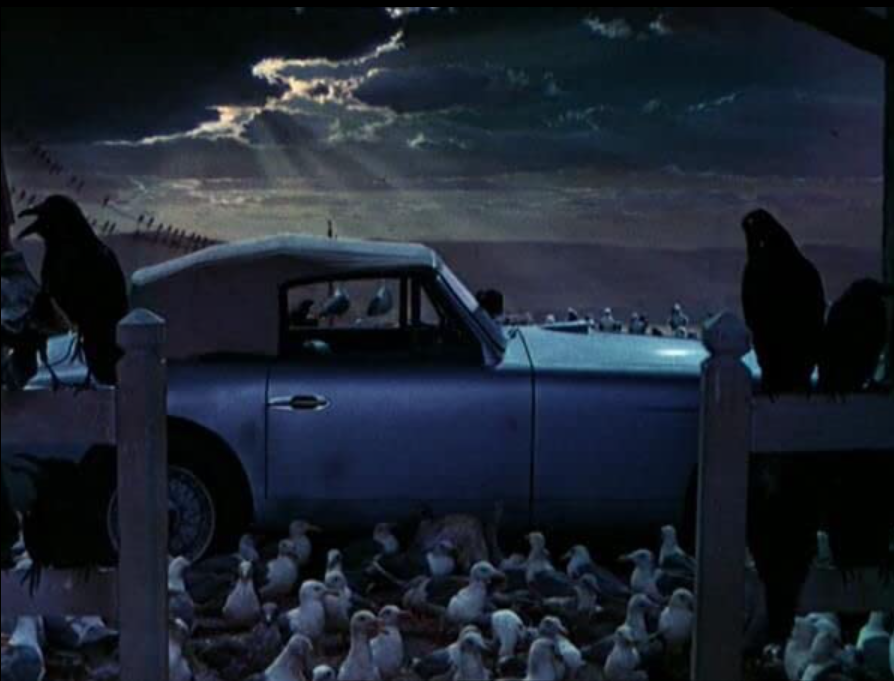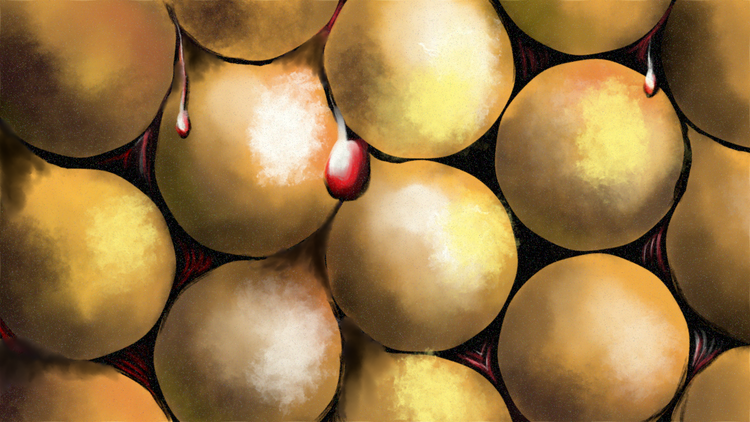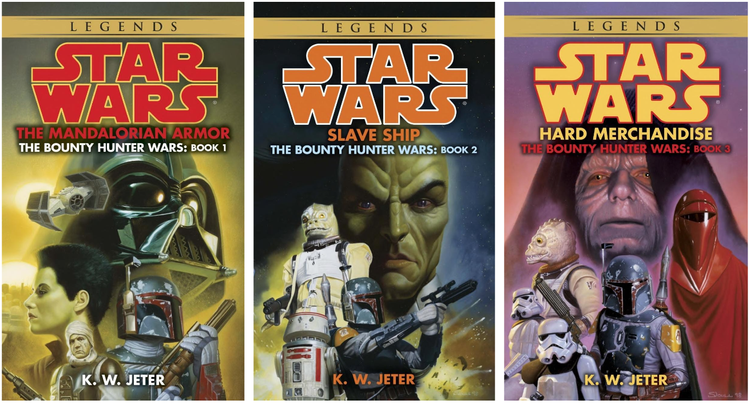
Running Commentary 1/16/2023
Hello,
Well, I’m happy to announce that I’ve made enough headway in building a new site theme to actually upload it to the live site (so if you’re reading this in your email, maybe click through to see things). There are still a few extra things I hope to add soon, but the core of it works. I based it on Ghost’s “Edition” theme, with a few tweaks to post design and to archiving. These newsletter posts are still separated from the main posts, but they’re no longer hidden content, as there’s now an element on the home page that shows recent newsletters before the main posts are listed. Overall, I’m happy with how it’s turned out. I’d like to thank Ryan Feigenbaum at Ghost and Norbert Hunyadi from bironthemes for their help answering my questions on the theme dev forums.
Anyway...
Watching...

BattleBots
- SAWBLAZE v HYPERSHOCK - Coming off of a very impressive run in last year’s Champions tournament, Hypershock seemed like a worthy match-up against Sawblaze. However, it couldn’t outrun its opponent. Sawblaze kept total control of the fight, eventually landing a strike to Hypershock’s underbelly that got its weapon stuck hard into Hypershock’s armor. Hypershock has the damage-dealing potential now that its weapon reliability has been sorted out, but it’s strike-and-run style makes it vulnerable to being cornered, as it was here.
- FUSION v EMUSIFIER - We had another new bot tonight in Emulsifier, a tread-mounted vertical disk from the team behind Shatter. Emulsifier is a lot less creative a design than Shatter, and a lot worse performing, due to weapon balance issues that send it backflipping away after every strike. Fusion seems like much the same bot it ever was, still catching on fire despite attempts to use its horizontal weapon as a cooling fan. By the end of the fight, both bots seemed to be on their last legs, and I got the feeling that each would have faired similarly if their opponent had been a stationary block. Emulsifier lost the judge’s decision, but the real losers were fans of well-built bots.
- VALKYRIE v MAMMOTH - Valkyrie returns under a new captain, who was fortunate enough to be matched up with Mammoth first. Now, don’t get me wrong, Mammoth is a very entertaining bot; Mammoth v Huge is probably the most entertaining fight in BattleBots, but Mammoth isn’t very likely to win by knockout; it’s weapon just doesn’t do enough of anything to really hurt it’s opponent. This was quite apparent here, as Mammoth couldn’t do anything to Valkyrie even as it had Valkyrie pinned on it’s left fork, right in the path of its weapon. Mammoth can win, if it gets lucky, but I’m not surprised to see it lose here.
- MADCATTER v WHIPLASH - This fight showed the importance of something that doesn’t get a lot of attention in BattleBots: traction. We all know how fights usually go against Whiplash: they grab their opponent and either spend the next three minutes carrying them around or prop them up somewhere so they can’t move anymore. That’s possible because Whiplash has really good traction, and can push other bots around. Madcatter also has really good traction, and when Whiplash went to push them around, the two bots just locked. Whiplash couldn’t do what Whiplash does to win fights so consistently, and so they didn’t win here.
- SWITCHBACK v BANSHEE - Banshee’s a new bot, a flipper similar to SubZero and Hydra. Switchback was the most disappointing rookie of last season, returned with a new design that, while better, seems to still not quite be it could be. Still, they were able to move around the arena and deliver some big hits to Banshee.
- HIJINX v BIG DILL - Hijinx is one of the only bar spinners left in BattleBots, and while it has struggled a bit to break into the top-tier of the sport, it’s still a threat to more average bots like Big Dill. This match went exactly how Hijinx wanted it to.
- END GAME v BLIP - I’m still a big Blip fan, but they just couldn’t do anything here. End Game was great at shutting Blip out, never once letting the flipper under their bot and keeping squared up with their weapon the whole time. Blip will have some easier fights later this season; there’s no shame in losing to End Game.

The Bad Batch
Episode 3 is here and (so far) Season 2 hasn’t had any of the episodes of pointless filler that cluttered up Season 1. There are still 13 episodes to go this season, so I doubt that streak will hold forever. Still, this episode was really good. Here are my notes:
- After he wasn’t in last season’s premiere, I figured that this episode would focus on Crosshair. I also figured that he was the one to report that the rest of the Bad Batch died on Kamino, and that Rampart would have questions for him now. He didn’t, at least not yet. I suppose Crosshair may not have said anything and just let Rampart draw his own conclusions. In any case, Rampart does seem upset with Crosshair still, given that he’s not giving him a command position.
- I’m not sure whether Desix was independent of the Republic before the war or if it was just a Separatist world. (They were the “Confederacy of Independent Systems”, after all.)
- This episode did a lot better job of making the droid army feel threatening than The Clone Wars did. Generally, the way battle droids won was by overwhelming numbers, but TCW had such huge battles that the scale was often not apprehensible to the viewer. Having a small squad of clones vs. a city full of droids helped make the way the two factions operate clearer.
- This show is at its best when it’s explaining how the Clone Army became the Stormtrooper Corps. It’s telling a story that people know is there, because they’ve seen the starting and endpoints, and that people are naturally curious about. We know something happened, we don’t know what, and that’s what this show is about, as much as it is about the Bad Batch specifically. That’s what I mean about pointless filler; sure, the Bad Batch might be there in the episode, but if all they’re doing is running random errands for Cid, and we aren’t seeing the way the Galaxy is changing around them, the episode is missing quite a lot.
Reading...

Full Spectrum by Adam Rogers
I picked this book to read because it seemed interesting, but I really wasn’t sure what it was about. The subtitle promises the story of “how the science of color made us modern”, but what does that mean? Having read the book, I might subtitle it “how color science has shaped the visual arts”, though that might be a bit too stuffy for what is an almost weirdly wide-ranging book. In Full Spectrum, Adam Rogers looks at the history of pigments, along with the history of optics and our physical understanding of color, and the history of the language used to describe color. It’s not simply a book about paint, but I don’t think I could describe it as a book about color, generally.
For instance, Rogers states early that he won’t be addressing cultural significance of various colors (blue being trustworthy, or purple royal, etc.) because such connotations aren’t constant across all times and places and and which thus aren’t really scientific facts. But, less consciously, Rogers doesn’t address lots of other color-related things. Food dyes go unmentioned, as do colored ornamentation in nature (e.g. flower petals or bird feathers). Most strangely at all, he never mentions color spectroscopy. He comes very close when he mentions that, say, a green object is not simply reflecting/emitting green light, but is reflecting/emitting a variety of wavelengths that simply average out to green in human perception, which is the fundamental phenomenon that makes spectroscopy work. I suppose spectroscopy might be too purely scientific for this book, which really is is about how color science has influenced humanity’s use of artificial, decorative color to produce psychological responses, not how color science has influenced humanity’s knowledge of the chemical makeup of stars.
What Rogers does cover he covers well. He spent several years as a writer for WIRED magazine, and his writing is very much the kind of thing you’d find in those pages: informative, thesis-focused, and occasionally dryly humorous. Several passages are actually adapted from some stories Rogers wrote about color for WIRED. So Full Spectrum is a pretty quick read. There are ten chapters, plus an introduction and a conclusion. For the first few, Rogers seems to bounce aimlessly between topics, but once you get to the later chapters, he starts to incorporate different things he’d mentioned earlier and a lot of his disconnected threads get woven together with new ideas. Overall, it’s well written, but hard to fully appreciate until the final chapters.
Full Spectrum is a good book that will change the way you see the world. Not fundamentally, or ideologically, but in the sense that, when you see things, you’ll remember something you read in this book about what seeing is, or how things are made to look the way they do. Color is such an ingrained part of our experience of our world that it’s difficult to really think about. In reading this book, one is guided to think about color in ways that the usual scientific, artistic, or philosophical ways of studying it never really get to. The book feels like it’s the first work to really get at some of its ideas, not simply an assembly of facts and anecdotes the author found during a years-long research session. I recommend this book to just about everyone. 8/10

Bird of the Week
Some time ago, I featured a gull, and I made a point of describing how ubiquitous such birds are on the shores of the world’s great bodies of water. But not every gull has a wide range. Take, for instance, the Western Gull. Where some of its cousins will have ranges spanning continents and oceans, the western gull is found only on the Pacific coast of the United States and Mexico’s Baja California peninsula., not venturing more than a matter of miles inland. They are large gulls, of the white-headed sort. (Black-headed gulls, of which I’ve never featured a species as yet, belong to different genera.) The coloration of western gulls varies geographically, with Californian birds having darker, nearly-black backs, while more northern specimens have lighter, gray backs, making them difficult to distinguish from the glaucous-winged gull, which is found throughout the northern Pacific. Indeed, hybrids between the two species, called “Olympic gulls”, are more common than purebreds in much of the Pacific Northwest, so it seems that the gulls themselves have some difficulty distinguishing western and glaucous-winged gulls, or, more likely, don’t care about the distinction.
Despite their relatively limited range and the difficulty of getting an exact census of the birds, it is known that western gulls are locally quite numerous. Their largest colonies live in San Francisco Bay; Alcatraz island was a major gull nesting site before a prison was built there. To this day, western gulls are a major nuisance for fans of the San Francisco Giants. Something, perhaps the lighting of stadium lights, or the playing of “Take Me Out to the Ball Game”, signals to the gulls when a baseball game is entering its final innings, at which point they will descend on the stands to supplement their usual diet of fish and sea urchins with hot dogs, peanuts, and cracker jack. 2012 say some relief when a red-tailed hawk, whom fans soon named in honor of locally-born action star Bruce Lee, took up residence in the ballpark. Bruce Lee left after a few months, and the gulls have returned.
As might be expected of the dominant gull species in California, the western gull has been in a lot of movies. The most prominent of the gull’s roles was as among the villains of Alfred Hitchcock’s The Birds. wherein they, along with crows and other birds, begin suddenly and uncharacteristically attacking the people of Bodega Bay.

A note about the background of my drawing. The mountains are Hurricane Ridge, a portion of the Olympic mountains. The water is the Strait of Juan de Fuca, and, had I drawn it as it appears today, there would be a harbor town on its shore. That town, Port Angeles, Washington, is the home to the headquarters of Olympic National Park, site of not just the namesake mountain range but also some of the only rainforests found in the continental United States. Port Angeles actually has a somewhat interesting history as the second town, after Washington, D.C., to be built by the U.S. Federal Government. This was done during the presidency of Abraham Lincoln, and it led to rumors that Port Angeles was meant to serve as a backup federal capital in case Washington, D.C., which was then on the border between the Union and the Confederacy, fell to Southern forces. This rumor is not true, and doesn’t even make that much sense if you think about it. The actual story was that Victor Smith, a federal customs collector, wished to move Washington Territory’s official Port of Entry from Port Townsend near land he owned on the Olympic Peninsula. He moved the customs house there, and Lincoln established a nearby military and lighthouse reserve that became the core of the town. Smith (and Lincoln) died in 1865, at which point the port of entry reverted to Port Townsend.
The western gull is one of surprisingly few birds first described by J. J. Audubon. While Audubon’s Birds of America introduced many birds to laypeople, most were already species known to science, and many that weren’t, such as the infamous bird of Washington, were, in fact, misidentified specimens of known species. Audubon first described the western gull, under the straightforward name Larus occidentalis, not in Birds of America but in his unillustrated follow-up Ornithological Biography. His description was based on two specimens shot at and sent to him from Cape Disappointment, a point at the mouth of the Columbia river, in what is now Washington state (south along the coast from Port Angeles).
Curation Links
Getting Lost in the World’s Largest Stack of Menus | Adam Reiner, TASTE
In 1900, an eccentric New Yorker named Miss Frank E. Buttolph hit upon the idea that someone ought to start preserving menus from the city’s restaurants. Today, the New York Public Library still houses Buttolph’s collection of menus, as well as others gathered since her death, now numbering over 40,000 from restaurants around the world.
Team Colors | Pliny the Younger, Lapham’s Quarterly
Writing to Calvisius, a Roman politician becomes perhaps the first to complain about casual sports fans rooting for whoever’s uniforms look the coolest.
The Heaviest Drinker in the Animal Kingdom | Sarah Zhang, The Atlantic
Hamsters, surprisingly, are ready and heavy drinkers. Given the choice between water and grain alchohol, hamsters will go for the alchohol. Why this is has been the subject of quite a bit of research. Sarah Zhang gives the answers here.
Bricked | Stephen Parkhurst, Shortverse
[FICTION] [VIDEO] Essentially what you’d get if the BBC’s Humans was made with a budget that about covered getting the actors lunch afterwards, this is an obviously cheap but well put-together look at what a future of android robots might look like if they’re a progression from current-day digital assistants.
See the full archive of curations on Notion






Member Commentary